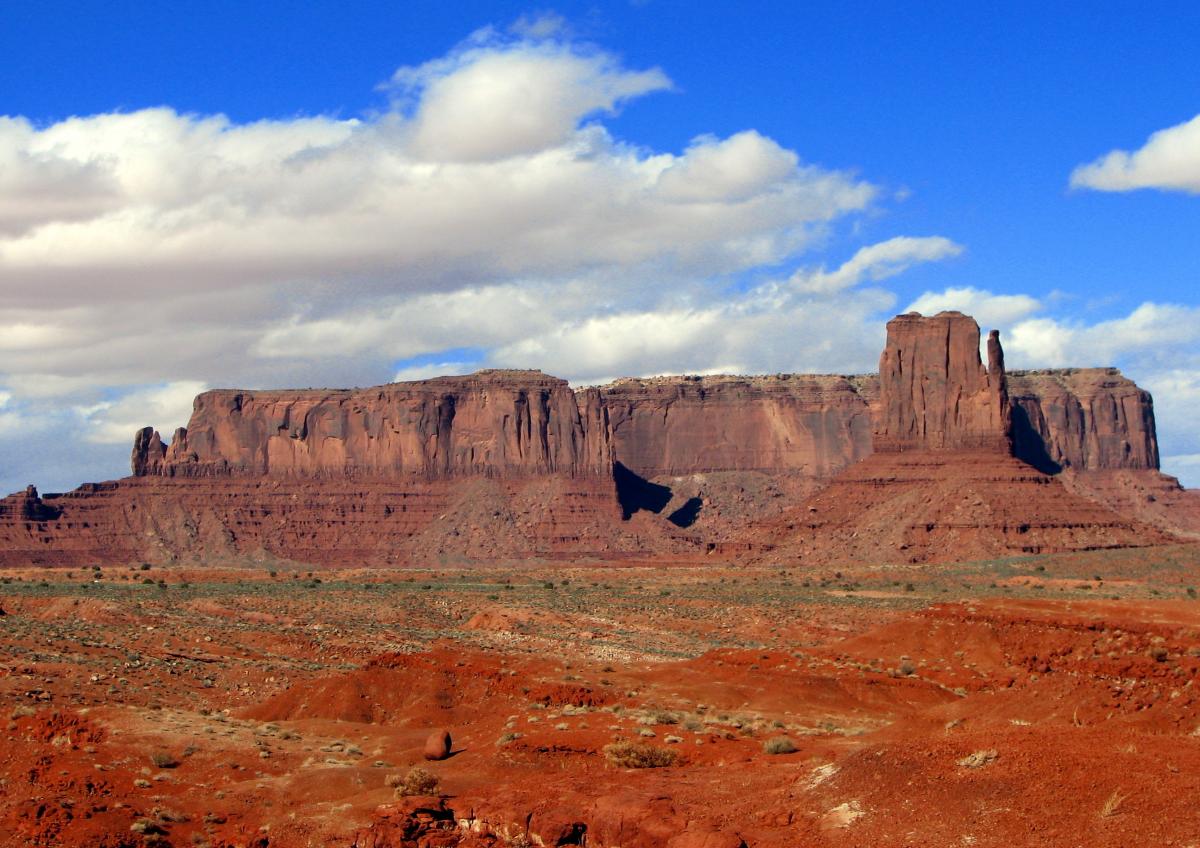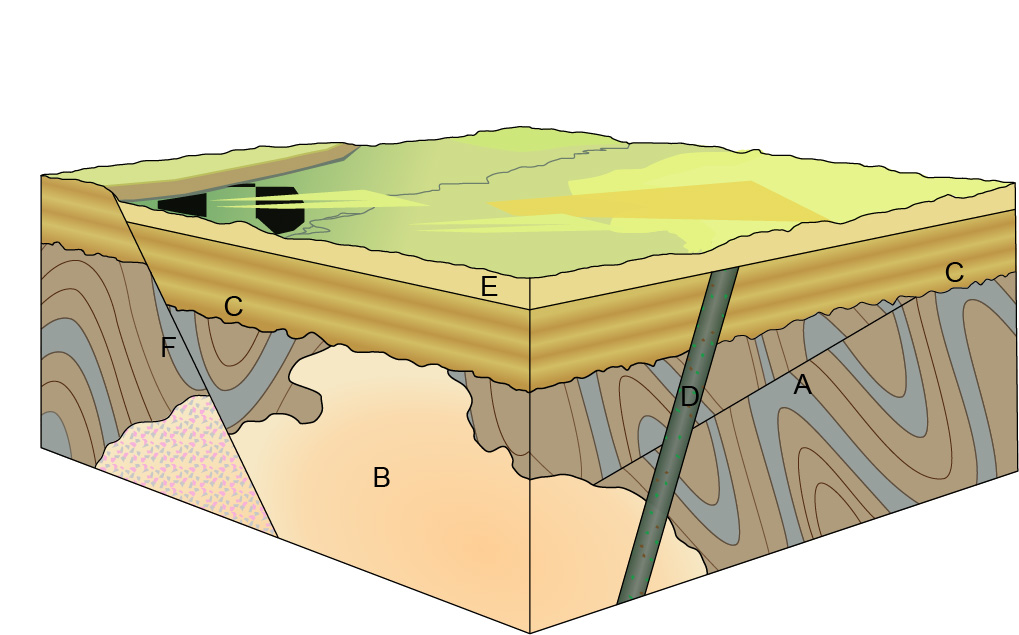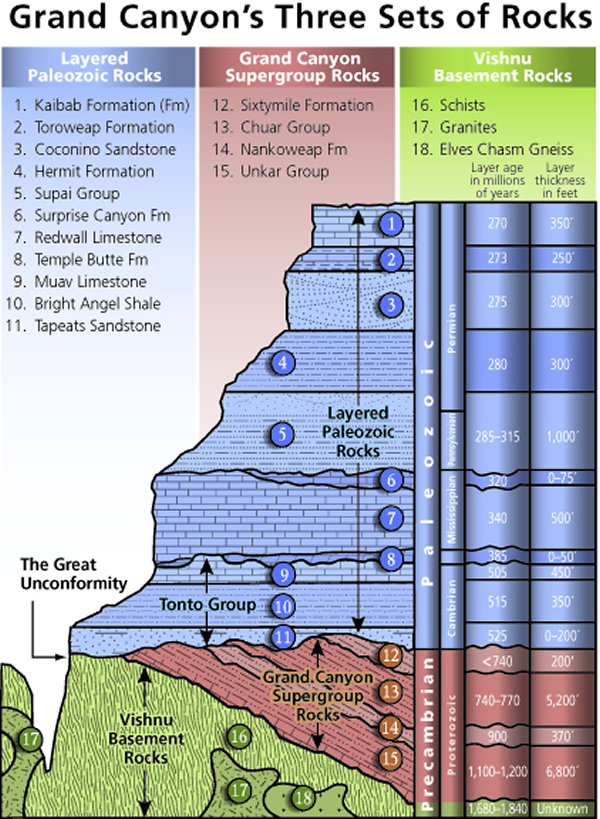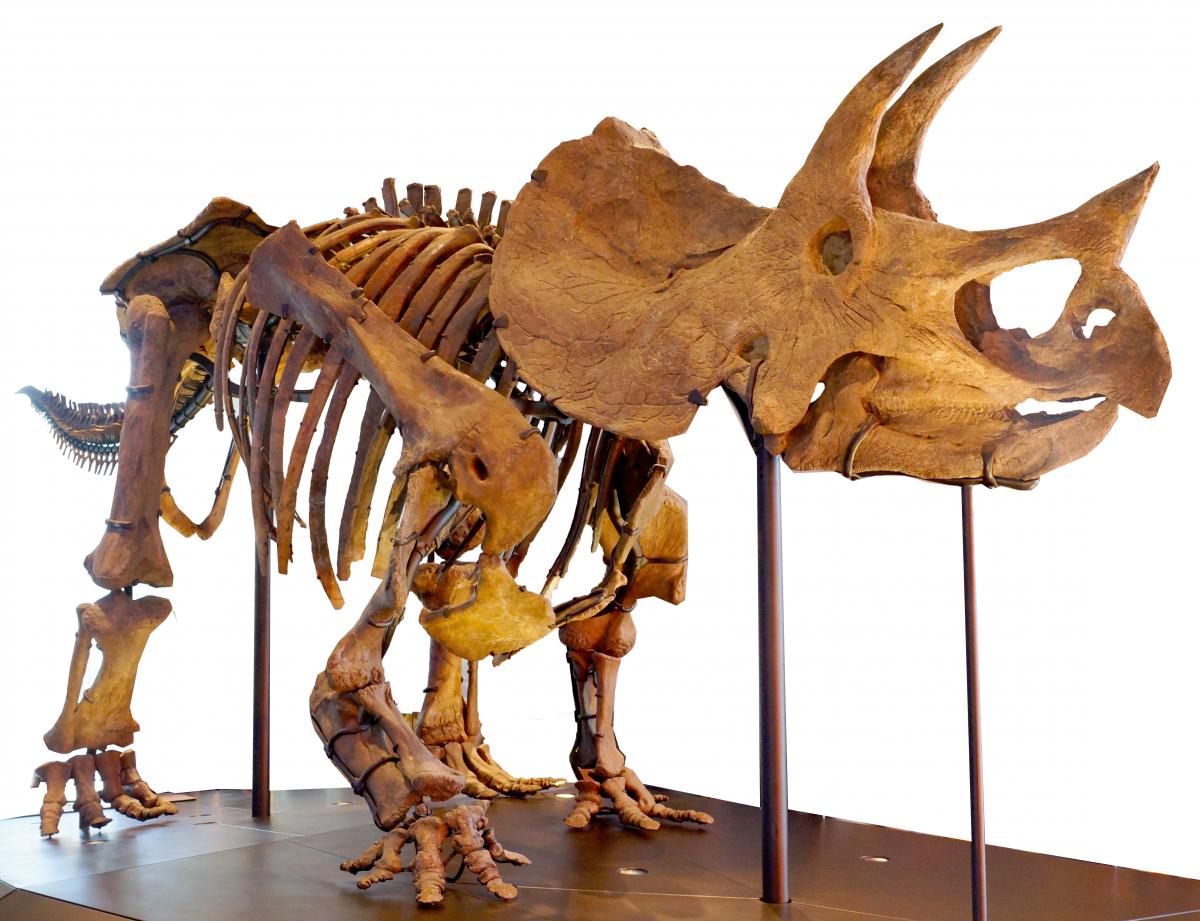After my three-parter on fossils, I was sure you'd be sick of them, but there was a request (seconded by a few people) to talk about one particular aspect of paleontology that I didn’t cover yet: How do you know how old a fossil is? It turns out to be a pretty interesting question.
Misconception: Paleontologists directly date fossils.
Correction: Most of the time, fossils are not directly datable.
Now let me nip something in the bud right away—just because a fossil isn’t directly datable does not mean we don’t have any idea how old it is. We totally do. It’s just that we can’t run some kind of neat test (involving colored water, maybe?) directly on the fossils in the field to tell us. Instead, we have to rely on two methods of dating: relative dating and radiometric dating.

Relative dating—as the name suggests—is a method of determining the relative ages of rock layers and the fossils contained therein. Recall that most fossils are housed within sedimentary rock, which results from the compaction and cementation of deposited sediments. A principle of geology, called the principle of original horizontality, states that sediments are always initially deposited in horizontal beds. The law of superposition states that in a series of undisturbed layers, any layer was deposited after the layers below it (that is, it’s younger than those layers) and before the layers above it (that is, it’s older than those layers). Both the principle of original horizontality and the law of superposition seem very intuitive and obvious, but they weren’t proposed until the 1600s, both by Danish anatomist, geologist, and priest Nicolaus Steno (1636–1686).
In a nice, simple world, we would have a complete and undisturbed record of sedimentary rocks to help us plot out Earth’s past. Unfortunately, this is not a nice, simple world. All kinds of things happen to rock layers after they form. They get uplifted, tilted, faulted, squashed and squeezed, and magma gets injected into them. It’s all a bit of a mess—but a mess that can be put in chronological order using relative dating  principles. If a fault line runs through a layer of rock, you know that the rock was there before the fault. If a magma intrusion goes through that layer and is unbroken by the fault, then you know that the magma intrusion came after the fault which came after the rock, and so forth. The geologic record is like a big puzzle that (frankly) is really fun to sort out, especially if you are a little OCD and like things to be in order (not that I’d know anything about that…).
principles. If a fault line runs through a layer of rock, you know that the rock was there before the fault. If a magma intrusion goes through that layer and is unbroken by the fault, then you know that the magma intrusion came after the fault which came after the rock, and so forth. The geologic record is like a big puzzle that (frankly) is really fun to sort out, especially if you are a little OCD and like things to be in order (not that I’d know anything about that…).
 Perhaps the biggest impediment to a neat and orderly rock record are our old friends weathering and erosion. In the Grand Canyon, for example, there is a layer of 1.7-billion-year-old igneous rock right under a layer of 550-million-year-old sedimentary rock. What happened in the intervening 1.2 billion years? Well, a lot. We just don’t, at the Grand Canyon, have a record of it. This gap in the rock record of the Grand Canyon is known as “The Great Unconformity.” An unconformity is a break in the rock record caused by some interruption to deposition. Unconformities can happen for a variety of reasons. Perhaps the sea levels retreated and what was once a perfect environment for deposition (shallow sea) was then several miles inland. Or maybe uplift exposed once safely buried rock layers. In either case, weathering and erosion are left free to work their mischief and erase some evidence of the geologic past.
Perhaps the biggest impediment to a neat and orderly rock record are our old friends weathering and erosion. In the Grand Canyon, for example, there is a layer of 1.7-billion-year-old igneous rock right under a layer of 550-million-year-old sedimentary rock. What happened in the intervening 1.2 billion years? Well, a lot. We just don’t, at the Grand Canyon, have a record of it. This gap in the rock record of the Grand Canyon is known as “The Great Unconformity.” An unconformity is a break in the rock record caused by some interruption to deposition. Unconformities can happen for a variety of reasons. Perhaps the sea levels retreated and what was once a perfect environment for deposition (shallow sea) was then several miles inland. Or maybe uplift exposed once safely buried rock layers. In either case, weathering and erosion are left free to work their mischief and erase some evidence of the geologic past.
So is that it? We’ll never know what happened during those 1.2 billion years? Of course not! The Grand Canyon is not the only location with a rock record. Scientists can correlate rock layers in different locations to get a more complete geologic record. In relatively close locations, the same actual rock layer may be present. The Grand Canyon’s rock layers can be directly correlated with those of nearby Bryce Canyon and Zion Canyon, for example. So say the Grand Canyon has layers A, D, E, and F and Bryce Canyon has layers A, B, C, F, and G—you can fill in the gaps by considering both locations. Get it? But what if you want to correlate across larger areas? Fossils to the rescue!
William Smith (featured in the current issue of RNCSE), noticed something striking while digging out canals across England—distinctive suites of fossils characterize rock layers and fossils tend to be found in the same general order across locations. (This earned him the sobriquet “Strata Smith”!) This principle of faunal succession can be used to correlate rock layers. Let’s say at site 1 you have a set of fossils that are only found together in one particular layer. Halfway around the world you find a rock layer with that same set of fossils. Guess what? Those two rock layers are the same age. Fossils called index fossils are particularly useful for correlating layers. Index fossils tend to be widespread geographically but not temporally. That is, you can find them all over the world, but they only appear in a limited portion of the rock record. Get enough overlapping ranges of index fossils and you can really get very accurate correlations.
 So all of this is well and good, but we have yet to actually put a date on anything. How is it that scientists can tell us that Triceratops lived 65–68 million years ago and not just “after Tiktaalik and before Megalodon”? To be discussed next time!
So all of this is well and good, but we have yet to actually put a date on anything. How is it that scientists can tell us that Triceratops lived 65–68 million years ago and not just “after Tiktaalik and before Megalodon”? To be discussed next time!
Have an idea for a future Misconception Monday or other post? See some good or bad examples of science communication lately? Drop me an email or shoot me a tweet <at>keeps3.

